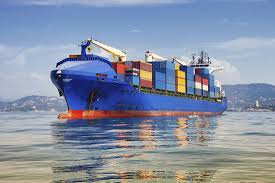
U.S. Trade Representative Jamieson Greer is poised to unveil the final plan on April 17, closing a year‑long investigation into China’s maritime dominance. The announcement coincides with the probe’s first anniversary, marking a pivotal moment for global shippers. Industry stakeholders have watched Greer’s process closely, hoping for clarity on fee structures and timelines. The final plan will determine whether USTR remedies strike a balance between protecting domestic shipyards and maintaining fluid port operations.
The initial proposal called for fees as high as \$1 million per China‑linked vessel per call. Its punitive scale reflected an aggressive strategy to counter China’s rise in shipbuilding and logistics. Since its release, the one‑million‑dollar figure has drawn fierce criticism. Port operators and exporters argued that such levies would cripple trade flows and damage U.S. commercial interests. Facing mounting opposition, USTR officials are reworking the fee design. New drafts suggest fees may scale with vessel size or cargo type, rather than a flat penalty for every ship.
Agricultural and bulk cargo exporters could win exemptions to shield vital exports like grain, coal, and critical minerals from additional costs. Such carve‑outs aim to prevent domestic producers from losing competitiveness abroad. Implementation of the retooled plan may slip to November as USTR weighs stakeholder feedback. This delay reflects efforts to fine‑tune measures and evade unintended economic shocks.
By postponing enforcements, authorities hope to engage further with ports, carriers, and shippers. The extended window provides breathing room to adapt IT systems and contractual frameworks. Small and medium‑sized ports warn that per‑call charges will divert vessel traffic toward major hubs. They fear secondary ports, recently modernized with public funds, will see all‑too‑few ship calls.
Industry leaders argue that choking off business at regional terminals undermines infrastructure investments in dredging, cranes, and expanded berths—projects designed to boost local economies. At the same time, U.S. shipyards stand to benefit if fees remain in force. General Dynamics’ NASSCO and Huntington Ingalls could capture new repair and construction contracts displaced from China.
Boardrooms at domestic yards are already planning capacity upgrades. A sustained flow of fee‑induced work could revitalize facilities and preserve thousands of maritime manufacturing jobs. Shippers warn that cargo diversions to Canadian, Mexican, and European ports may accelerate if U.S. fees bite too hard. Alternative gateways could siphon traffic away from American shores.
Longer routing and extra overland transit raise overall logistics costs. Importers and exporters anticipate stretched lead times and higher freight charges as goods navigate more complex corridors. The China Shipowners Group has pledged legal challenges at the WTO and in U.S. courts, claiming the fees violate maritime conventions and trade agreements. Beijing’s carriers vow to contest any penalties. Such litigation could stall implementation and sow uncertainty over compliance. A protracted legal battle may pit USTR policy goals against established international norms.
Washington is pressing key allies to mirror U.S. levies, aiming to forge a broader coalition against China’s shipbuilding heft. European and Asian partners face pressure to join the initiative. Coordinated fees would magnify pressure on Beijing but demand diplomatic finesse. Allies wary of trade reprisals may resist participation, fearing blowback on their own maritime sectors. Leading shipping lines caution that added port costs will flow through to freight rates, compressing margins for carriers and inflating shipping bills for consumers and businesses alike.
Expectations of surging ocean tariffs prompt forwarders to recalibrate contracts and surcharges. Buyers of manufactured goods may soon feel the pinch in consumer prices. U.S.-flagged Jones Act operators could see a boost in demand as shippers shift cargo onto domestic vessels to sidestep fees. Such gains, however, may be tempered by capacity limits. Jones Act fleets are small relative to global trade volumes. Any spike in utilization risks overloading available tonnage, potentially stranding cargo or driving spot‑market rates skyward.
The port fees are part of a broader push to rebalance maritime power, reducing reliance on China’s shipyards and flag registry. USTR frames the move as central to national strategy. Critics say the fees risk fragmenting global shipping, fueling a tit‑for‑tat dynamic at sea. Supporters argue that strategic recalibration is overdue after decades of Chinese subsidies and expansion.
Elevated operational costs threaten to cascade into higher input prices for U.S. manufacturers and retailers. Raw materials, machinery parts, and consumer goods could all carry steeper price tags. Producers reliant on imported steel or electronics warn that margins may erode unless supply chains adapt swiftly to tariff‑induced cost pressures.
USTR’s strategic aim is to bolster national security by strengthening domestic maritime capacity. Officials argue that resilient shipyards and ports are vital amid growing geopolitical tensions. In an era of fragile supply chains, expanding U.S. shipbuilding capability is seen as insurance against foreign disruptions and sanctions regimes.
China may retaliate by restricting calls of U.S.-flagged vessels at its ports, escalating maritime tit‑for‑tat. Beijing’s trade agencies have hinted at reciprocal measures if fees proceed. Such moves could limit access for American ships to major Asian import hubs, complicating export routes and eroding revenue for U.S. carriers.
Investors in shipping stocks prepare for market volatility as the plan’s contours come into focus. Freight‑line share prices may swing with every regulatory update. Equity analysts cite the uncertainty over fee scope and legal outcomes as key risk factors. The shipping sector’s earnings outlook now hinges on geopolitics as much as on trade volumes.
(Source:www.reuters.com)
The initial proposal called for fees as high as \$1 million per China‑linked vessel per call. Its punitive scale reflected an aggressive strategy to counter China’s rise in shipbuilding and logistics. Since its release, the one‑million‑dollar figure has drawn fierce criticism. Port operators and exporters argued that such levies would cripple trade flows and damage U.S. commercial interests. Facing mounting opposition, USTR officials are reworking the fee design. New drafts suggest fees may scale with vessel size or cargo type, rather than a flat penalty for every ship.
Agricultural and bulk cargo exporters could win exemptions to shield vital exports like grain, coal, and critical minerals from additional costs. Such carve‑outs aim to prevent domestic producers from losing competitiveness abroad. Implementation of the retooled plan may slip to November as USTR weighs stakeholder feedback. This delay reflects efforts to fine‑tune measures and evade unintended economic shocks.
By postponing enforcements, authorities hope to engage further with ports, carriers, and shippers. The extended window provides breathing room to adapt IT systems and contractual frameworks. Small and medium‑sized ports warn that per‑call charges will divert vessel traffic toward major hubs. They fear secondary ports, recently modernized with public funds, will see all‑too‑few ship calls.
Industry leaders argue that choking off business at regional terminals undermines infrastructure investments in dredging, cranes, and expanded berths—projects designed to boost local economies. At the same time, U.S. shipyards stand to benefit if fees remain in force. General Dynamics’ NASSCO and Huntington Ingalls could capture new repair and construction contracts displaced from China.
Boardrooms at domestic yards are already planning capacity upgrades. A sustained flow of fee‑induced work could revitalize facilities and preserve thousands of maritime manufacturing jobs. Shippers warn that cargo diversions to Canadian, Mexican, and European ports may accelerate if U.S. fees bite too hard. Alternative gateways could siphon traffic away from American shores.
Longer routing and extra overland transit raise overall logistics costs. Importers and exporters anticipate stretched lead times and higher freight charges as goods navigate more complex corridors. The China Shipowners Group has pledged legal challenges at the WTO and in U.S. courts, claiming the fees violate maritime conventions and trade agreements. Beijing’s carriers vow to contest any penalties. Such litigation could stall implementation and sow uncertainty over compliance. A protracted legal battle may pit USTR policy goals against established international norms.
Washington is pressing key allies to mirror U.S. levies, aiming to forge a broader coalition against China’s shipbuilding heft. European and Asian partners face pressure to join the initiative. Coordinated fees would magnify pressure on Beijing but demand diplomatic finesse. Allies wary of trade reprisals may resist participation, fearing blowback on their own maritime sectors. Leading shipping lines caution that added port costs will flow through to freight rates, compressing margins for carriers and inflating shipping bills for consumers and businesses alike.
Expectations of surging ocean tariffs prompt forwarders to recalibrate contracts and surcharges. Buyers of manufactured goods may soon feel the pinch in consumer prices. U.S.-flagged Jones Act operators could see a boost in demand as shippers shift cargo onto domestic vessels to sidestep fees. Such gains, however, may be tempered by capacity limits. Jones Act fleets are small relative to global trade volumes. Any spike in utilization risks overloading available tonnage, potentially stranding cargo or driving spot‑market rates skyward.
The port fees are part of a broader push to rebalance maritime power, reducing reliance on China’s shipyards and flag registry. USTR frames the move as central to national strategy. Critics say the fees risk fragmenting global shipping, fueling a tit‑for‑tat dynamic at sea. Supporters argue that strategic recalibration is overdue after decades of Chinese subsidies and expansion.
Elevated operational costs threaten to cascade into higher input prices for U.S. manufacturers and retailers. Raw materials, machinery parts, and consumer goods could all carry steeper price tags. Producers reliant on imported steel or electronics warn that margins may erode unless supply chains adapt swiftly to tariff‑induced cost pressures.
USTR’s strategic aim is to bolster national security by strengthening domestic maritime capacity. Officials argue that resilient shipyards and ports are vital amid growing geopolitical tensions. In an era of fragile supply chains, expanding U.S. shipbuilding capability is seen as insurance against foreign disruptions and sanctions regimes.
China may retaliate by restricting calls of U.S.-flagged vessels at its ports, escalating maritime tit‑for‑tat. Beijing’s trade agencies have hinted at reciprocal measures if fees proceed. Such moves could limit access for American ships to major Asian import hubs, complicating export routes and eroding revenue for U.S. carriers.
Investors in shipping stocks prepare for market volatility as the plan’s contours come into focus. Freight‑line share prices may swing with every regulatory update. Equity analysts cite the uncertainty over fee scope and legal outcomes as key risk factors. The shipping sector’s earnings outlook now hinges on geopolitics as much as on trade volumes.
(Source:www.reuters.com)














